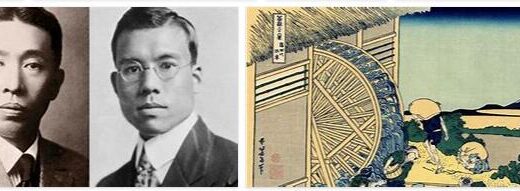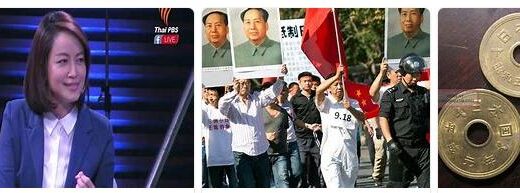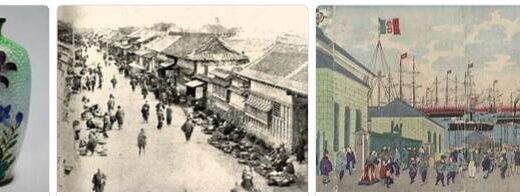Japan Brief History Part IV
The democratic transformation
After the surrender, the Japan was placed under the occupation of the United States through the Supreme Command of the allied forces, led by General D. MacArthur, who used Japanese politicians and civil officials for the work of government and administration. A Commission for the Far East was in charge of overseeing the implementation of the country’s demilitarization and democratization program, according to the policies drawn up by the US government.
The first act of political importance of the Command was the issuing of the Charter of Civil Rights, with which the foundations of democratic life were affirmed for the first time in Japan. Parties and trade unions were reconstituted, the rightextendedto vote for women, elected a constituent assembly that approved a Constitution (in force in 1947) inspired by Washington; The dissolution of the zaibatsue was attempted, with little success, and the purge of the elements compromised with the past regime, which mostly affected the military, was initiated. Hirohito, on the grounds that his transcendent role in politics had prevented him from intervening in the decisions of the power bloc, was not called to answer before the Tokyo Tribunal which tried war criminals, and held the imperial title until his death. (1989), when he was succeeded by his son Akihito (it was Heisei). The defense of the emperor and of countless active supporters of the pre-war imperial system was part of the conservative plan of maintaining capillary control over society, no longer imposed by coercion, but implemented with the call to ‘common welfare’.
The objectives of the Japanese conservative forces, starting from 1948, were supported by the turnaround in the occupation policy implemented by the United States, which contributed to the need to stabilize the Japanese economy, mitigate social conflict and curb the political rise of the socialists. Nor did international changes have minor weight such as the victory of the Communists in China: Japan became the main ally of the USA in the Pacific area. In this context the decisions in the economic field were placed, from the agrarian reform, which canceled the large property, to the start of the reconstruction plan and to the fixing of the exchange rate between the dollar and the yen; in the political sphere, the intervention of the Occupation Command in support of the conservative forces took place with greater determination. San Francisco (1951), not signed by the USSR, China and India, Japan regained full independence (1952).
The Japan great power
After the Second World War, political life was dominated for a long time, except for the brief interlude of the socialist government in 1947-48, by the liberals and democrats, who in 1955 gave birth to the Liberal Democratic Party (PLD). The office of party president, allowing for the automatic election as prime minister, became the key post for the exercise of power. Liberal Prime Minister S. Yoshida was the main architect of economic reconstruction based on the principles of rigorous protectionism; from 1956, when production reached the maximum levels of the pre-war period, the economy maintained very high rates of development, up to allowing Japan to become the second world economic power.
After the political decline of Yoshida, in power until 1954, the position was held by, among others, N. Kishi (sentenced to prison by the Tokyo Tribunal for war crimes, but rehabilitated in 1952) in 1957-60, E. Sato (1964-72), K. Tanaka (1972-74), Y. Nakasone (1982-87), N. Takeshita (1987-89), T. Kaifu (1989-91), K. Miyazawa (1991-93). The political story of Tanaka was singular. Forced to resign (1974) following a scandal, he was re-elected as an independent deputy to his constituency and until 1985 maintained control of his faction, establishing alliances and influencing the political rise of party presidents.
According to VAULTEDWATCHES, the stability of the liberal democratic majority was favored by the majority electoral system and by the over-representation of the (mainly conservative) campaigns in the distribution of seats. Executive power was expressed by strong governments, internally hegemonized by key ministries (Finance, Industry and International Trade). The increase in military spending in the 1980s, when Tokyo’s political-military role grew in the Pacific area, also following pressure from Washington, provoked strong indignation against the PLD. The weakening of the party undermined the political stability that had characterized Japan for over forty years, concomitantly with the emergence of economic difficulties that questioned the Japanese model of development for the first time. In 1993 a coalition led by the leader of the New Japanese Party (NPG) M. Hosokawa took over the government who, opposed by the powerful bureaucracy for his policy aimed at limiting its prerogatives, was forced to resign the following year. In 1994 T. Hata, a leading exponent of the Renewal Party, lasted just two months; he was succeeded by T. Murayama, leader of the Social Democratic Party, promoter of an electoral reform that introduced the proportional system and provided for the redistribution of constituencies to reduce the incidence of voting in traditionally conservative rural areas; in 1996, the Liberal Democrats returned to the leadership of the country with R. Hashimoto, who placed financial recovery and greater control of political power over the ministerial bureaucracy, discredited by a series of scandals, among the priority objectives of his government.



